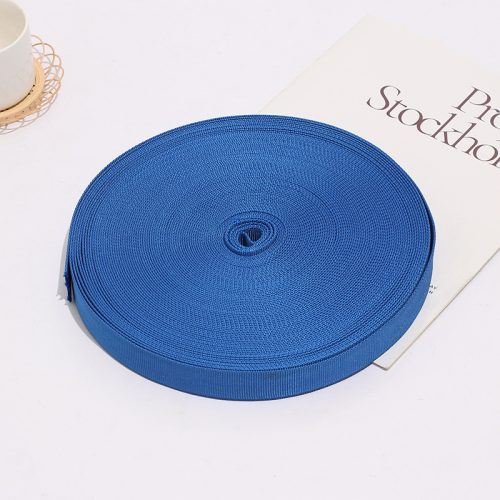The strength of nylon webbing is determined by a combination of its material properties, manufacturing processes, and structural design. Understanding the science behind nylon webbing strength involves considering factors such as the properties of nylon itself, the weaving or manufacturing method, and the load distribution within the webbing structure. Here’s an overview:
- Material Properties of Nylon:
- Polymer Structure: Nylon is a synthetic polymer with a repeating molecular structure that contributes to its strength. The arrangement of atoms in the polymer chain influences its tensile strength and flexibility.
- Tensile Strength: Nylon is known for its high tensile strength, which is the maximum amount of force it can withstand without breaking when subjected to a pulling or stretching load.
- Weaving and Manufacturing Process:
- Weave Pattern: The way the nylon fibers are woven or knitted together affects the strength of the webbing. Common weave patterns include plain weave, twill weave, and ripstop weave, each with its own characteristics in terms of strength, flexibility, and durability.
- Stitching and Reinforcement: Some nylon webbing incorporates stitching or reinforcement in specific areas to enhance strength and prevent fraying or unraveling.
- Load Distribution and Structure:
- Load-Bearing Configuration: The load-bearing capacity of nylon webbing is influenced by its width, thickness, and the density of the weave. Wider and thicker webbing generally has higher load-bearing capacity.
- Distribution of Load: Nylon webbing distributes the applied load along its fibers. This allows the load to be spread across multiple strands of nylon, reducing the strain on individual fibers and increasing overall strength.
- Polymer Behavior:
- Elasticity: Nylon has a degree of elasticity, meaning it can stretch to a certain extent before returning to its original shape. This property allows it to absorb shocks and impacts without breaking.
- Creep Resistance: Creep is the slow deformation that occurs under a constant load over time. Nylon’s creep resistance is important for maintaining its structural integrity under sustained stress.
- Durability and Environmental Factors:
- Resistance to UV and Moisture: The ability of nylon to resist UV radiation and moisture helps maintain its strength and prevents degradation over time, especially in outdoor or wet environments.
- Abrasion Resistance: Nylon’s resistance to abrasion ensures that it retains its strength even when it comes into contact with rough surfaces.
- Testing and Standards:
- Certification and Standards: Nylon webbing may be tested and certified by relevant standards organizations to ensure it meets specific load-bearing and safety criteria. Different applications may have different standards.
The science behind nylon webbing strength involves a combination of material science, engineering principles, and manufacturing expertise. Engineers and manufacturers optimize these factors to create nylon webbing that offers the desired balance of strength, flexibility, and durability for various applications, including tactical gear, outdoor equipment, safety gear, and more.


